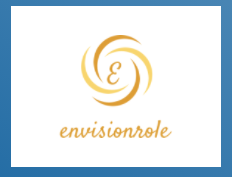Google’s Unconventional Advice On Fixing Broken Backlinks
When it comes to fixing broken backlinks, Google suggests an unconventional approach focusing on the links that are most helpful for “users” rather than simply fixing them all.

Traditionally, SEO best practices emphasize fixing broken backlinks to ensure a site gets the maximum possible link equity.
Google’s advice goes a step further by recommending that site owners consider the user value of these links when deciding whether to fix them.
Why It’s Important to Check Backlinks ?
Checking for broken backlinks is crucial after running a backlink campaign.
Site owners may add links well after you’ve requested them, but they might link to the wrong URL, resulting in a broken link.
Types of Broken Backlinks
There are two common types of broken backlinks that usually matter:
1. Backlinks pointing to pages that no longer exist or whose URLs have changed.
2. Backlinks where the URL is misspelled.
However, not all broken backlinks are worth fixing.
Some don’t matter as much, including:
Links from low-quality websites that don’t drive any traffic.
Links to outdated web pages that no longer serve a purpose.
Links generated by spam, AI chatbots, or malicious bots.
How to Identify Broken Backlinks ?
The best way to identify broken backlinks is by reviewing 404 errors from pages that no longer exist or URLs that are misspelled.
If a broken backlink is important, you’ll notice web traffic being directed to a 404 page.
It may not always be possible to see the source of the broken link, but you can try searching for the broken URL to track it down.
Additionally, server logs can provide details such as the IP address and user agent that accessed the broken link.
This information can help you determine whether the visitor was a spam bot, a hacker, a search engine bot, or an actual user.
For those without access to server logs, tools like the Redirection WordPress plugin or the Wordfence plugin can help identify these errors.
Using a backlink tool might also be useful, but for sites with a large number of backlinks, it can become a time-consuming task that may not be worth the effort—especially if the broken link doesn’t generate any traffic.
Fixing Broken Backlinks
There are two primary ways to fix broken backlinks:
Recreate the missing resource or redirect the URL to a page with similar content.
Redirect misspelled URLsto the correct URL.
Another option is to contact the website owner to correct the broken link, but this approach comes with some risks:
The website owner may decide to remove the link entirely.
They could choose to add a no-follow attribute to the corrected link.
Other websites that copied the broken link might also need updating.
In most cases, simply redirecting the broken link to the correct URL is the safest solution without risking the loss of the backlink.
Broken Backlinks and Link Reclamation
Identifying and fixing broken backlinks is often part of a site audit, a process sometimes referred to as “link reclamation.”
This quick SEO win can be highly beneficial to site owners, especially when focused on 404 error responses, as these are links that are either being crawled or visited by users.
By prioritizing the most valuable broken backlinks, site owners can ensure that both their SEO efforts and user experience are maximized without wasting time on low-impact fixes.
